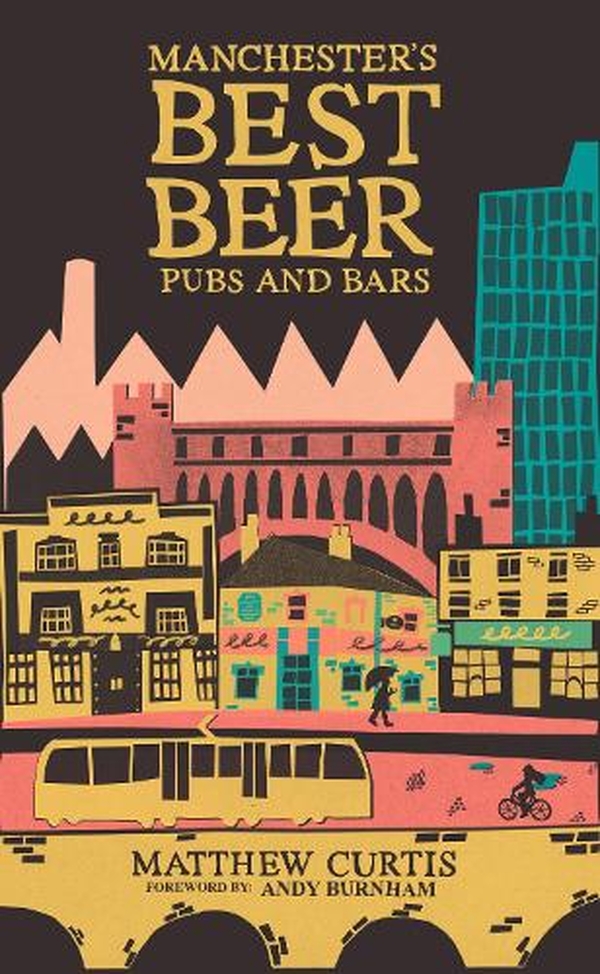Superb guide to Manchester beer & pubs
Added: Saturday, November 18th 2023

Manchester’s Best Beer, Pubs and Bars
Matthew Curtis (CAMRA Books, £16.99)
Manchester has long been paradise for beer lovers. I recall in the 1980s stopping at a pub in the suburb of Hythe that served Boddington’s Bitter for a “swift half” and refusing to leave on the grounds that “I didn’t know beer could be that good”.
I had a similar magic moment a few years later at a meeting of CAMRA’s executive in a Holt’s pub in the city and marvelling at my first taste of the brewery’s Mild, rich in dark malt and chocolate flavours. Today it only accounts for a tiny proportion of the brewery’s output but – praise be – Holts remain committed to its production.
With so much fine beer and amazing pubs to write about, Matthew Curtis’s book is clearly a labour of love, enhanced by a foreword by Andy Burnham, the mayor of Greater Manchester, who is no stranger to the city’s ale houses.
Matt is not only a fine writer but an excellent photographer as well. As a result, his book is packed with striking images of beer, pubs and, most importantly, people enjoying a good pint.
Alas, one beer they won’t be drinking is cask Boddington’s. The brewery was the victim of takeovers and ham-fisted re-designs that has reduced that amazing beer to a canned supermarket cheapie. It used to be said that when prisoners broke out of Strangeways Prison they planned to raid the brewery next door for a decent pint. I doubt they would bother to break into the nearest Tesco for the tinned version of Boddies.
Matt locks Manchester’s beer heritage into its working-class history and its roots in the Industrial Revolution. It became known as King Cotton or Cottonopolis and its dark, satanic mills created a vast army of thirsty workers. Remarkably, while heavy industry is now largely a footnote, some of the family brewers created in the 18th and 19th centuries have survived and we can continue to revel in the majestic brews of Lees, Holts, Hydes and, down the road in Stockport, Robinsons.
For two centuries, the family brewers have built and maintained large pub estates. No expense was spared in designing hostelries that were both opulent and full of creature comforts for people who left their rudimentary and chilly homes for a few hours of convivial beery pleasure.
In common with Matt Curtis, I have supped and savoured in such illustrious pubs as the Castle Hotel, the Peveril of the Peak, the Derby Brewery Arms – effectively Holt’s tap – the Briton’s Protection, the Lass O’Gowrie, the Circus and the Old Monkey.
When the Daily Express had a Manchester office, I once lost an afternoon in the Crown & Kettle next door with fellow hacks from the paper. The pub has stood there since 1774 and had an amazingly elaborate carved ceiling that was reduced to char during a battle between rival supporters of City and United fans when a firebomb was thrown.
Matt and I share a love of the Marble Arch on Rochdale Road. It serves splendid beers from the Marble Brewery – which used to be based behind the pub but has since moved to Salford – and is renowned for its elaborate faux-marble pillars and a sloping floor that becomes more of a slither as the pints go down.
Laurel and Hardy used to drink there when they were appearing at a nearby theatre. You can picture Stan slaloming down to the bar, removing his bowler, rumpling his quiff and saying to Hardy: “There’s another fine mess you’ve gotten me into”… and then ordering another pint of mild.
But Manchester is not living on its past. As William Lees-Jones, the managing director of JW Lees, told Matt, the city has changed “beyond belief” in the past 20 years. What is dubbed the craft beer revolution has seen the flowering of a large number of new and highly innovative breweries in the Manchester area.
The revolution was made possible by the introduction of Progressive Beer Duty in 2002, which cuts by half the excise duty paid by brewers who make up to 5,000 hectolitres a year.
Marble was one of the main drivers of the new beer scene. It was followed by the highly influential Cloudwater, Beer Nouveau and Track. They were complemented by new pubs and bars such as Port Street Bar that brought a fresh dimension to beer in the city with hazy IPAs and other styles influenced by the American beer revival.
Food has improved, too. I especially like Bundobust in Piccadilly with excellent beers from its own brewery and good-value vegetarian Indian meals.
Matt’s book is more than just a beer and pubs guide. He outlines both the history of Manchester and its brewing heritage. He tells visitors how to get around, using trains, buses and the marvellous tram system and suggests museums to visit.
Reading the book has been a trip down memory lane for me. I recall a tasting session at Robinson’s of different interpretations of the strong barley wine Old Tom and the honour of pressing the button at John Willie Lees to start the mash of the venerable strong ale Moonraker.
Matt Curtis has produced not just a guide but a celebration of a great city and its beer. It’s not a book for the armchair but one that should get you on the first train to Manchester to wallow in its pubs and breweries.
Available from www.camra.org.uk








